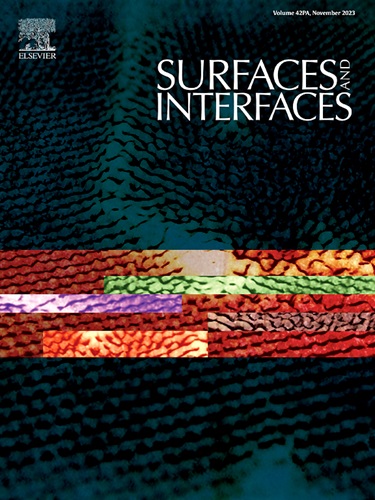Tailoring bismuth oxybromide microsphere properties with different additives for applications in visible-light driven wastewater treatment
IF 5.7
2区 材料科学
Q2 CHEMISTRY, PHYSICAL
引用次数: 0
Abstract
The increasing complexity of water pollution presents a serious threat to public health, spurring a growing demand for advanced materials capable of efficiently removing multiple pollutants in wastewater treatment. Photocatalysts, particularly those with tunable structural and surface characteristics, have gained recognition as potential solutions for this purpose. In this study, bismuth oxybromide (BiOBr) photocatalysts were prepared through the solvothermal approach using different shape-controlling agents to investigate their impact on crystal properties, Brunauer-Emmett-Teller (BET) surface area (SBET), morphology and photocatalytic performance. Through comprehensive characterization using XRD, FESEM-EDX, HRTEM-SAED, and BET analyses, it was found that the choice of shape-controlling agent significantly affected the crystallite size, the (110)/(012) crystallographic plane ratio, hierachical particle morphology, size distribution and SBET of the synthesized BiOBr. Among the samples, BiOBr synthesized with polyvinylpyrrolidone (PVP) exhibited the smallest crystallite size, narrow particle size distribution, and the highest SBET, along with a 3D hierarchical porous flower-like microsphere morphology. These features led to the highest photodegradation activity for Rhodamine B (RhB) dye when irradiated with visible light. Additionally, the BiOBr synthesized with PVP exhibited effective antibacterial activity against Escherichia coli, further underscoring its potential for disinfection in wastewater treatment. The results highlight the potential of BiOBr, particularly the PVP-mediated synthesis, as an effective photocatalyst for wastewater remediation application.
用不同添加剂裁剪氧化溴化铋微球性能,用于可见光驱动的废水处理
日益复杂的水污染对公众健康构成严重威胁,促使人们对能够在废水处理中有效去除多种污染物的先进材料的需求不断增长。光催化剂,特别是那些具有可调结构和表面特性的光催化剂,已经被认为是实现这一目的的潜在解决方案。本研究采用溶剂热法制备了氧化溴化铋(BiOBr)光催化剂,研究了不同形状控制剂对其晶体性能、比表面积(SBET)、形貌和光催化性能的影响。通过XRD、FESEM-EDX、HRTEM-SAED和BET等综合表征发现,控形剂的选择对合成的BiOBr的晶粒尺寸、(110)/(012)晶面比、分层颗粒形貌、尺寸分布和SBET有显著影响。其中,聚乙烯吡咯烷酮(PVP)合成的BiOBr晶体尺寸最小,粒径分布窄,SBET最高,具有三维分层多孔花状微球形态。这些特征导致罗丹明B (RhB)染料在可见光照射下具有最高的光降解活性。此外,PVP合成的BiOBr对大肠杆菌具有有效的抗菌活性,进一步显示了其在废水消毒处理中的潜力。这些结果突出了BiOBr作为一种有效的光催化剂在废水修复中的应用潜力,特别是pvp介导的合成。
本文章由计算机程序翻译,如有差异,请以英文原文为准。
求助全文
约1分钟内获得全文
求助全文
来源期刊

Surfaces and Interfaces
Chemistry-General Chemistry
CiteScore
8.50
自引率
6.50%
发文量
753
审稿时长
35 days
期刊介绍:
The aim of the journal is to provide a respectful outlet for ''sound science'' papers in all research areas on surfaces and interfaces. We define sound science papers as papers that describe new and well-executed research, but that do not necessarily provide brand new insights or are merely a description of research results.
Surfaces and Interfaces publishes research papers in all fields of surface science which may not always find the right home on first submission to our Elsevier sister journals (Applied Surface, Surface and Coatings Technology, Thin Solid Films)
 求助内容:
求助内容: 应助结果提醒方式:
应助结果提醒方式:


